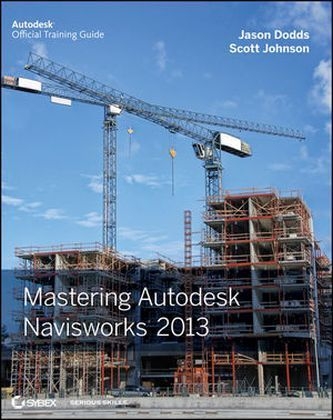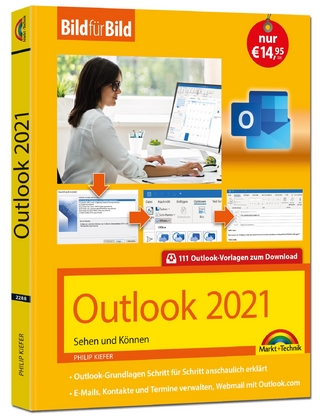
Mastering Autodesk Navisworks 2013
John Wiley & Sons Inc (Verlag)
978-1-118-28171-0 (ISBN)
- Titel ist leider vergriffen;
keine Neuauflage - Artikel merken
The only book on Autodesk's popular and powerful architectural project collaboration software This Autodesk Official Training Guide is the perfect detailed reference and tutorial for the powerful Navisworks software. You'll quickly learn how to use Navisworks to design, review, and collaborate while saving time, meeting budgets, and working efficiently. Covering the entire project design workflow, this book is crammed with detailed how-to instruction; real-world examples; and tips, tricks, and expertise gleaned from the expert author team. Discover how to work with more than 60 file formats, create a single 3D model, navigate and edit it, find design problems with Clash Detection, visualize schedules, and much more in this jam-packed guide.
* Covers all the Navisworks features in Simulate, Manage, and Freedom * Explains Navisworks file types and all of the 60+ other supported file types * Shows you how to navigate around a 3D model and enable snap shots and animation * Addresses using Clash Detection to test and find problems, optimizing and visualizing schedules using the TimeLiner 4D simulation tool, and more * Helps you create impressive visualizations and walkthroughs with lighting, effects, and textures * Includes coverage of advanced tools and customizing Navisworks with scripts With an expert author team, Mastering Autodesk Navisworks 2013 is your essential guide to getting the very most out of the powerful Navisworks collaboration and design review software.
Jason Dodds is an Autodesk Construction Solutions Engineer who has been actively involved in all facets of design and building processes for over 15 years and has been using Navisworks since the software's inception. Scott Johnson is an Autodesk Sr. Technical Account Manager and an early adopter of Navisworks who has over 15 years of experience in design, construction, digital prototyping, and manufacturing. Both authors consult internationally and speak regularly at Autodesk University (AU) and other industry events.
Foreword xvii Introduction xix Part 1 Navisworks Basics 1 Chapter 1 Getting to Know Autodesk Navisworks 3 Interface Organization 3 Application Menu: The Blue N 3 Quick Access Toolbar 6 Help Toolbar 6 Navisworks Options 7 Exploring the Ribbon 14 Home 14 Viewpoint 18 Review 21 Animation 23 View 24 Output 26 Item Tools 29 Status Bar, Performance Indicators, and Context Menus 30 The Bottom Line 32 Chapter 2 Files and File Types 33 Navisworks File Types 33 Native File Formats 34 File Readers 38 File Exporters 43 File Aggregation 47 Opening Files 47 Appending Files 49 Merging Files 50 Refreshing Files 53 Deleting Files 53 Saving Files 53 Publishing Files 54 Emailing Files 56 Batch Utility 57 Object Enablers 66 Exploring the Object Enabler 66 Locating and Confi guring an Object Enabler 67 The Bottom Line 70 Chapter 3 Moving around the Model 73 Using the Navigation Bar 73 Panning and Zooming 74 Pan Tool 75 Zoom Tools 75 Pan and Zoom in Action Together 78 Learning to Walk and Fly 78 Walk Tool 78 Fly Tool 83 Walking around the Model 84 Using the Orbit and Look Tools 88 Orbit Tools 88 Look Tools 89 Using the ViewCube and SteeringWheels 90 ViewCube 90 SteeringWheels 92 Using the ViewCube and SteeringWheels Together 93 The Bottom Line 94 Chapter 4 Climbing the Selection Tree 95 Discovering Object Properties 95 Properties 95 Quick Properties 101 Exploring Object Properties of Multiple Elements 106 User-Defi ned Properties 108 Managing Models 109 Using Selection Sets 109 Creating Search Sets 111 Using Select Commands 119 Exploring the Quick Find 120 Adding, Removing, and Updating Items 120 Exporting and Reusing Search Sets 121 Navigating the Selection Tree 122 Standard 122 Compact 129 Properties 131 Sets 133 Exploring Selection Tree Options 133 Configuring Model Visibility 133 Controlling Object Display Using Display Overrides 136 Selection Resolution 148 File Units and Transform 150 Compare 152 The Bottom Line 154 Chapter 5 Model Snapshots: Viewpoints, Animations, and Sections 155 Understanding Viewpoints 155 Saving Viewpoints 156 Viewpoint Folders 160 Editing and Updating Viewpoints 160 Exporting Viewpoints 165 Creating Animations 166 Using Record to Make Quick Animations 167 Creating an Animation from Viewpoints 168 Editing and Updating Animations 169 Exporting an Animation 170 Using Sections 174 Sectioning in Planes Mode 175 Sectioning in Box Mode 176 Using the Gizmo 176 Transforming Sections 177 Sectioning a Project 179 The Bottom Line 180 Part 2 Simulation and Clash Detection 181 Chapter 6 Documenting Your Project 183 Using the Measure Tools 183 Working with the Dimension and Area Tools 184 Translating Items 198 Marking Up with the Redline Tools 201 Using the Text Tools 202 Using the Draw Tools 203 Adding Comments and Tags 208 Saving in Viewpoints 218 The Bottom Line 220 Chapter 7 4D Sequencing with TimeLiner 221 Introducing TimeLiner 221 Exploring the Tasks Tab 224 Confi guring the Data Sources Tab 243 Using the Confi gure Tab 279 Using the Simulate Tab 283 4D Simulation Best Practices 300 Showing Context in the Model 301 Creating Reusable Equipment Libraries 303 Simulating Trades and Equipment Paths 304 Using Multiple Task Types for Schedule Analysis 305 Creating Focused 4D Simulations 305 Automatically Mapping the Model to the Schedule 305 The Bottom Line 307 Chapter 8 Clash Detection309 Starting Clash Detection 309 Test Panel Explained 309 Adding to and Maintaining Test Items 311 Importing and Exporting Clash Tests 311 Working with Rules in Clash Detective 312 Creating New Rules 312 Rules Templates 313 Clashing Objects 314 Clash Object Selection 315 Geometry Type and Self Intersect 317 Run Panel 319 Understanding Clash Results 325 Clash Groups 327 Display Settings 328 Item 1 and 2 Panes 331 SwitchBack 332 Time-Based Clash Detection 333 Clash Detection Redlines, Markups, and Comments 334 Clash Reports 337 Report Contents 338 Output Settings 339 Writing a Report 341 The Bottom Line 344 Part 3 Advanced Navisworks Tools 345 Chapter 9 Creating Visualizations 347 Presenter Overview 347 Archive and Palette 347 Interface Options 349 Applying Materials 352 Adding Materials to the Scene 353 Removing Materials 354 Editing Materials 357 Lighting the Model 358 Lighting Types 359 Adding Lights to the Model 360 Advanced Lighting Techniques 363 Enhancing Scenes with RPC 365 Adding RPCs 366 Deleting, Moving, and Editing RPCs 366 Completing the Scene with Effects 369 Backgrounds and Foregrounds 369 Environments 370 Rendering 372 Render Styles 372 Final Rendering 374 Additional Presenter Tools 375 Texture Space 375 Rules 377 The Bottom Line 378 Chapter 10 Animating Objects 379 Animator Overview 380 Animating with Keyframes 386 Setting Up Cameras and Viewpoints 389 Manipulating Geometry 390 Translating 391 Rotating 392 Scaling 394 Changing Color 395 Changing Transparency 396 Animating Section Planes 396 Exporting Animations 400 The Bottom Line 402 Chapter 11 Giving Objects Life and Action with Scripter 403 Introducing Scripter 403 Creating and Managing Scripts 403 Enabling and Disabling Scripts 405 Using Events and Actions 405 Types of Events 407 Conditions 414 Actions 416 The Bottom Line 424 Chapter 12 Collaborating outside of Navisworks 425 Exploring the NWD File 425 Using Navisworks Freedom 425 Viewing Navisworks Files on the Web 427 Automating with Command-Line Switches 428 Command-Line Batch Utility Options 432 Automating the Batch Utility with the Command Line433 Extending Navisworks to External Applications 434 Interacting with NWNavigator 434 Leveraging Vault for Data Management 437 Embedding Navisworks Files in Microsoft PowerPoint Presentations 440 Examining Other Export Options 442 Exporting to Google Earth 442 FBX 445 3D DWF/DWFx 446 Customizing with the Navisworks API 447 The Bottom Line 448 Chapter 13 Other Useful Navisworks Tools 449 Model Data Tools 449 The Project Browser in Depth 456 Navigating the Project Browser 457 Searching among 3D and 2D Objects 458 Mastering Links 459 Creating Links 459 Editing Links 461 External Application Links 462 Other Links 462 Managing Links 464 Gearing Up for Your Next Project 469 The Bottom Line 469 Chapter 14 Managing BIM Workflows 471 Leveraging Navisworks in BIM 471 Contractor Workfl ow with John Mack of Herrero Contractors, Inc 473 The Projects 473 Establishing Leadership 474 Creating the Vision 475 Project Staffing 477 Selecting the Software 480 Stress Testing the Models 480 Selecting the Hardware 481 The Workflow: Mapping the Current and Future Process 481 Level of Detail 482 Sharing Model Files 483 File Naming 485 The Training Plan 486 Tracking Changes 486 Reliable Promises and Weekly Work Plans 488 The Integrated Building Model 489 Model Tolerances 491 3D Spatial Coordination 493 3D Clash Detection and Clash Avoidance 493 4D Model-Based Scheduling 493 4D Model-Based Production Planning 495 Facility Maintenance 497 Contract Requirements 497 Model Data Ownership 497 Testing New Technology or Ideas 497 Contractor Workfl ow with Art Theusch, The Christman Company 497 Project Planning Kickoff 498 BIM Execution Plan 498 Quality Analysis/Quality Check of Design Models 498 Clash Detection of Design Models 499 Navisworks Timeline of the Project during Design 499 Prepping the Model for Bidding 500 3D Coordination 500 Deliverables 502 Recap 502 Civil Workflow with Roberta Oldenburg of Mortenson Construction 502 Starting with the End in Mind 503 Building the Team 504 Setting Standards 504 Creating the Model 505 The End in Mind508 The Bottom Line 508 Appendix A The Bottom Line 509 Chapter 1: Getting to Know Autodesk Navisworks 509 Chapter 2: Files and File Types 509 Chapter 3: Moving around the Model 510 Chapter 4: Climbing the Selection Tree 511 Chapter 5: Model Snapshots: Viewpoints, Animations, and Sections 512 Chapter 6: Documenting Your Project 513 Chapter 7: 4D Sequencing with TimeLiner 513 Chapter 8: Clash Detection 514 Chapter 9: Creating Visualizations 515 Chapter 10: Animating Objects 516 Chapter 11: Giving Objects Life and Action with Scripter 517 Chapter 12: Collaborating Outside of Navisworks 517 Chapter 13: Other Useful Navisworks Tools 518 Chapter 14: Managing BIM Workfl ows 519 Appendix B Best Practices and Supplementary Information 521 Optimizing Performance 521 2D Graphics 521 Detail 521 Graphics System 522 Transparency 523 Memory Limit 523 Merge Duplicates 523 Securing the Global Options Editor 523 Supported File Types 525 Getting Help 527 Changing the Third Person Avatar Figure 528 Selected Glossary 528 Display Terminology 529 Export Terminology 529 File Terminology 529 Selection Terminology 530 Viewpoint Terminology 531 Clash Detective Terminology 532 Modeling and Other Terminology 533 Index 535
| Erscheint lt. Verlag | 14.8.2012 |
|---|---|
| Zusatzinfo | Illustrations |
| Verlagsort | New York |
| Sprache | englisch |
| Maße | 186 x 233 mm |
| Gewicht | 840 g |
| Themenwelt | Informatik ► Office Programme ► Outlook |
| Informatik ► Weitere Themen ► CAD-Programme | |
| ISBN-10 | 1-118-28171-3 / 1118281713 |
| ISBN-13 | 978-1-118-28171-0 / 9781118281710 |
| Zustand | Neuware |
| Informationen gemäß Produktsicherheitsverordnung (GPSR) | |
| Haben Sie eine Frage zum Produkt? |
aus dem Bereich


